 January 28, 2021 John E. Ross, KD8IDJ, Editor
| ||||||
QSO Today Expo to Include Speaker Track on Amateur Radio Satellites The QSO Today Virtual Ham Expo on March 13 - 14 will devote a speaker track to AMSAT and the world of amateur radio satellites. The expo is in "full planning mode" and promises "many exciting new things" for the upcoming event, which will include a world-class lineup of more than 60 speakers and workshops for beginners to experts. Presenters at nine AMSAT sessions will discuss the broad spectrum of ham radio satellites, including:
Thompson, an AMSAT Board Member, said working satellites is one of the most rewarding privileges of holding an amateur radio license. "There has never been a better time to be involved in amateur radio satellites, since some long-standing regulatory burdens have been lifted and advanced technology has never been more affordable and accessible," Thompson remarked. "We have opportunities now that were not available as of even a few years ago. AMSAT is fortunate to contribute to the expo by showcasing the truly amazing work going on around the world in the amateur satellite scene. And the Expo is an ideal partner to show it off to the wider ham audience." AMSAT will have a booth at the expo, where attendees can talk to experts, enthusiasts, operators, and technicians and obtain contact and membership information for the 30 AMSAT societies around the world. Early-bird tickets are $10 (to help cover the cost of this event) and $12.50 "at the door." That includes entry for the live, 2-day event as well as access during the 30-day on-demand period following the event. Register on the QSO Today Virtual Ham Expo website. ARRL is a QSO Today Virtual Ham Expo partner. Ham Radio's SuitSat Returns in Short Horror Film SuitSat makes an appearance in a new video short sci-fi thriller, called Decommissioned. "Inspired by true events," the video short resurrects the 2006 spacesuit/satellite that transmitted messages on 2 meters as it circled Earth. The original SuitSat-1 project, conceived by an "ARISS designed and built an antenna and radio gear that got approved for installation into the suit, and cosmonaut Valeri Tokarev and Commander Bill McArthur, KC5ACR, put SuitSat-1 into orbit at the start of a spacewalk," ARISS-US Delegate for ARRL Rosalie White, K1STO, recounted. SuitSat-1 transmitted a voice message, "This is SuitSat-1 RS0RS!" in several languages, plus telemetry and a slow-scan TV image on an 8-minute cycle as it orbited Earth. In the 6-minute film, a SuitSat returns in the future to haunt International Space Station Commander Diaz, played by Joey Vieira. Diaz is seen taking photos from inside an observation dome on the ISS "If there was any cause for alarm, you know we'd see it too," Houston assures him. As the object closes in, an increasingly anxious Diaz recognizes the "debris" as SuitSat. "This is SuitSat," comes a voice on the ham radio. "Houston, you're not gonna believe this. We're picking up transmissions on the ham radio that sound identical to the SuitSat experiment," he tells a skeptical mission control. "It's SuitSat! I'm seeing SuitSat!" "SuitSat re-entered the atmosphere and burned up years ago," mission control responds. "It's impossible." Decommissioned was produced by Perception Pictures and directed by Australian filmmaker Josh Tanner. He told Gizmodo that he
produced the video "using the Unreal Engine technology that The Mandalorian used, albeit old-school rear projection, as opposed to the fancy LED wall tech they used."
A short video shows how Decommissioned was made. SuitSat-1 -- called Radioskaf or Radio Sputnik in Russian -- was so successful that another unneeded Orlan spacesuit was subsequently refitted as SuitSat-2. As an interesting sidebar with respect to the real SuitSat, White explained, "After the ARISS engineers calculated SuitSat-1's orbit and spin characteristics, they knew the legs and arms would have to be filled with something, so they asked the crew to stuff dirty laundry inside." The original SuitSats were deorbited to burn up in Earth's atmosphere after their useful lives ended. ARRL is a partner in the ARISS program, which has kept amateur radio on the air from the International Space Station for 20 years. A hallmark of the ARISS program is the scheduled ham radio contacts between ISS crew members and earthbound schools and student groups. ARRL Podcasts Schedule
The latest edition of Eclectic Tech (Episode 26) The On the Air and Eclectic Tech podcasts are sponsored by Icom. Both podcasts are available on iTunes (iOS) and Stitcher (Android), as well as on Blubrry -- On the Air | Eclectic Tech. President Biden Taps Commissioner Jessica Rosenworcel as Acting FCC Chair This week, President Joseph Biden designated FCC Commissioner Jessica Rosenworcel as acting chair of the FCC. She succeeds, at least temporarily, former FCC chair Ajit Pai, who resigned effective on January 20. "I am honored to be designated as the Acting Chairwoman of the Federal Communications Commission by President Biden," Rosenworcel said in a statement. "I thank the President for the Prior to joining the FCC, she served as Senior Communications Counsel for the United States Senate Committee on Commerce, Science, and Transportation. Before entering public service, she practiced communications law in Washington, DC. The newest FCC commissioner, Nathan Simington, a Republican appointee, said Rosenworcel "brings deep knowledge and experience and highly informed judgment to her new position." He expressed appreciation that the Biden Administration acted promptly to establish FCC leadership by "selecting such a distinguished public servant for this vital role." Fellow Democrat Geoffrey Starks said Rosenworcel "has been a passionate advocate for bringing the benefits of broadband to all Americans -- particularly our children." He said her designation as acting chair "comes at a critical juncture for the Commission, as COVID-19 has made bold action to end internet inequality more vital than ever."
Rosenworcel has also been appointed as Defense Commissioner. Among other duties and responsibilities, the Defense Commissioner represents the FCC in interagency matters pertaining to public safety, homeland security, national security, emergency preparedness, disaster management, and defense and related matters, including those pertaining to continuity of essential FCC functions under emergency conditions. CHESS CubeSat Constellation to Carry FUNcube Transponders
The CHESS (Constellation of High Energy Swiss Satellites) project includes two satellites, which will be built simultaneously and later launched as a constellation. "The main science objective is to improve the understanding of the upper atmosphere by in-situ measurements...taking advantage of a The amateur radio payload is a joint project of AMSAT-UK and AMSAT-NL. A successful review of system requirements was completed in December. Launch will not take place until the fourth quarter of 2022. The satellites themselves are a project of the École polytechnique fédérale de Lausanne (EPFL), with support from several other schools. -- Thanks to AMSAT News Service via AMSAT-UK ARRL Learning Network Webinars Visit the ARRL Learning Network (a members-only benefit) to register, check on upcoming webinars, and view previously recorded sessions. The schedule is subject to change. Easy Helical Copper Tape and PVC 2-Meter Vertical Antenna: John Portune, W6NBC Learn how to quickly build a tiny, 18-inch continuously loaded lightweight portable or base station 2-meter omnidirectional vertical with performance and Tuesday February 2, 2021 @ 1 PM EST (1800 UTC) Interesting Stories About Ham Radio & Weather Spotting: Rob Macedo, KD1CY One of the most critical ways amateur radio supports agencies such as the National Weather Service (NWS), National Hurricane Center, and emergency management is through weather spotting via the NWS SKYWARN program. This presentation reviews some interesting stories about how amateurs involved in SKYWARN have saved lives and property and why this is an important amateur radio activity. Thursday February 11, 2021 @ 8 PM EST (0100 UTC on Friday, February 12) Maxim Memorial Station W1AW Tour: Joe Carcia, NJ1Q, W1AW Station Manager Maxim Memorial Station W1AW, located in Newington, Connecticut, was established to honor the memory of ARRL's co-founder and first president, Hiram Percy Maxim. Although the first radio station of the ARRL was actually located in Hartford, Connecticut and active as W1MK, W1AW in Newington is known worldwide and considered the radio station most associated with Hiram Percy Maxim. Formally established in 1938 - nearly 2 years after the death of Hiram Percy Maxim - W1AW has consistently been on the air, save for the time when the station was ordered off the air by the FCC due to World War II. This guided tour will provide an inside look at W1AW and will be led by Station Manager Joe Carcia, NJ1Q. Thursday February 18, 2021 @ 3:30 PM EST (2030 UTC) Talking to Astronauts: An Elementary School's Exciting ARISS Experience: Diane Warner, KE8HLD This is a story about Tallmadge Elementary School's participation in a once-in-a-lifetime ARISS (Amateur Radio on the International Space Station) school contact. You'll learn about their amazing journey leading up to the amateur radio contact with an astronaut on the International Space Station. The excitement of the entire experience was shared not just by the students, but included faculty, parents, the community, and local amateur radio operators. You will also learn how to begin the process of submitting your own ARISS contact proposal. Tuesday, March 2, 2021 @ 1 PM EST (1800 UTC) Visit the ARRL Learning Network for more information. YOTA Month a Success in the Americas and Around the World December YOTA Month 2020 was a great success in the Americas. Youth-operated amateur radio stations, operating under the Youth on the Air (YOTA) banner in the Western Hemisphere, contributed more than 14,600 contacts to the annual worldwide event, which celebrates youth in amateur radio. Two dozen operators under the age of 26 used special event call signs to promote youth in amateur radio in the Americas. During December YOTA Month in the US, four 1 × 1 special event call signs -- K8Y, K8O, K8T, and K8A -- were on the air, rotating among "My favorite part of YOTA Month was running five radios at once," said Michael Lippert, W3MLJ, a Pennsylvania teenager. "They were all on digital modes. Running the big FT8 pileups was very fun, and to see the rate of the contacts being logged was really cool." Fifth-grader Calin Rismiller, K8MTJ, commented, "In general, I liked making a bunch of QSOs in a short period of time. In particular, I had a really nice conversation with Erich, KC9CUK, on 40 meters. I also got a kick out of working ZR1ADI in South Africa, on 20-meter FT8." "Using lessons from YOTA Month 2019 made organizing more streamlined and flexible for our operators this year," said Bryant Rascoll, KG5HVO, who coordinated the efforts of the 24 operators and their logs. As part of his responsibilities, he also managed Logbook of The World (LoTW) accounts for US stations, the QRZ.com profiles for all the call signs, maintained an operator schedule, worked with YOTA Month Manager Tomi Varro, HA8RT, and reported to the YOTA camp committee in the Americas. December YOTA Month served as a prelude for the first-ever youth ham camp hosted in the Western Hemisphere. The event is tentatively scheduled for July 11 - 16, 2021. Globally, more than 137,000 YOTA Month contacts were logged under the 46 call signs that hams younger than 26 put on the air. That surpassed last year's record number of 129,029. The US placed second, behind Croatia, in the total number of contacts made during the event. More than 2,100 operators of all ages received awards based on the number of YOTA contacts made. Unclaimed awards can be downloaded. Additional statistics are also available. All YOTA Month QSL cards should be requested via OQRS on the Club Log website (registration required). More information about YOTA in the Americas can be found on the Youth on the Air website. Announcements
Amateur Radio in the News ARRL Public Information Officers, Coordinators, and many other member-volunteers help keep amateur radio and ARRL in the news. Share any amateur radio media hits you spot with us. Reaching for the Stars: RSU 21 Students Contact Astronaut in Space Portsmouth Herald (New Hampshire), January 22, 2021 In Quiet, Remote U.P., Ham Radio Helps Michiganders Connect From Confines of Home Detroit Free Press (Michigan), January 21, 2021 Ham on Hog 3: Icom IC-705 Transceiver Meets Harley-Davidson Ultimate Motorcycling, January 12, 2021 Balloon Launched by Pella Students Makes 3rd Trip Around the Globe KNIA-KRLS Radio (Iowa), December 28, 2020 Passion and Purpose featuring Toby Papas, KL0SS, President of the Williamsburg Area Amateur Radio Club Williamsburg's Next Door Neighbors (Virginia), February 2021 Getting It Right Due to a typographical error, the incorrect "North America Adventure Frequency" (NAAF) FM simplex channel on 2 meters appeared among the Announcements in the January 21 edition of The ARRL Letter. The correct frequency is 146.58 MHz. In Brief...
The K7RA Solar Update Tad Cook, K7RA, Seattle, reports: Solar activity increased this week. We saw no spotless days, and the average daily sunspot number rose from 14.7 to 28.1. Average daily solar flux was up from 76.1 to 77.2. Average daily planetary A index rose from 4 to 9.4, due to a minor geomagnetic storm on Monday. On that day, Alaska's High Latitude College A index was 33.
Predicted planetary A index is 5 on January 28 - 31; 18, 12, and 8 on February 1 - 3; 5 on February 4 - 6; 10 on February 7 - 8; 5 on February 9 - 19; 8, 12 and, 12 on February 20 - 22, and 5 on February 23 - 26. Sunspot numbers for January 21 - 27 were 26, 39, 34, 23, 26, 23, and 26, with a mean of 28.1. The 10.7-centimeter flux was 77.6, 78.2, 77.9, 77.6, 77.1, 75.7, and 76.3, with a mean of 77.2. Estimated planetary A indices were 3, 4, 5, 5, 17, 21, and 11, with a mean of 9.4. Middle latitude A index was 2, 3, 3, 4, 14, 9, and 9, with a mean of 6.3. A comprehensive K7RA Solar Update is posted Fridays on the ARRL website. For more information concerning radio propagation, visit the ARRL Technical Information Service, read "What the Numbers Mean...," and check out K9LA's Propagation Page. A propagation bulletin archive is available. For customizable propagation charts, visit the VOACAP Online for Ham Radio website. Share your reports and observations. Just Ahead in Radiosport
Upcoming ARRL Section, State, and Division Conventions Many conventions and hamfests have been canceled or postponed due to the coronavirus pandemic. Check the calendar of canceled events on the ARRL website.
Find conventions and hamfests in your area.
ARRL -- Your One-Stop Resource for . .
Subscribe to...
Free of charge to ARRL members...
| ||||||
.jpg) Space Station (Frank Bauer, KA3HDO)
Space Station (Frank Bauer, KA3HDO).jpg) Amateur Radio on the International Space Station (
Amateur Radio on the International Space Station (.JPG) when he spies some distant space debris and radios Houston to express concern.
when he spies some distant space debris and radios Houston to express concern..jpg)
.jpg) The latest episode of the On the Air podcast (Episode 13) features a discussion with Curt Laumann, K7ZOO, about his success in boosting activity at the University of Arizona amateur radio club.
The latest episode of the On the Air podcast (Episode 13) features a discussion with Curt Laumann, K7ZOO, about his success in boosting activity at the University of Arizona amateur radio club..jpg) discusses synchronous AM reception and includes an interview with Dave Tipping, NZ1J, about a novel approach to boost foxhunt participation.
discusses synchronous AM reception and includes an interview with Dave Tipping, NZ1J, about a novel approach to boost foxhunt participation..jpg) opportunity to lead an agency with such a vital mission and talented staff. It is a privilege to serve the American people and work on their behalf to expand the reach of communications opportunity in the digital age."
opportunity to lead an agency with such a vital mission and talented staff. It is a privilege to serve the American people and work on their behalf to expand the reach of communications opportunity in the digital age.".png) The Commission's other Democratic appointee, Brendan Carr, called Rosenworcel "a talented and dedicated public servant, as evidenced by her 8 years of distinguished service on the FCC."
The Commission's other Democratic appointee, Brendan Carr, called Rosenworcel "a talented and dedicated public servant, as evidenced by her 8 years of distinguished service on the FCC."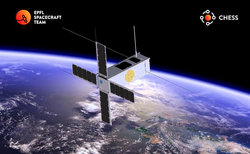 In 2020, a project between AMSAT-UK, AMSAT-NL, and Swiss universities got under way with the aim of equipping two Swiss satellites with linear amateur radio transponders. Linear transponders permit several CW or SSB contacts to take place simultaneously within a prescribed passband. The satellites also include features for classroom demonstrations and experiments.
In 2020, a project between AMSAT-UK, AMSAT-NL, and Swiss universities got under way with the aim of equipping two Swiss satellites with linear amateur radio transponders. Linear transponders permit several CW or SSB contacts to take place simultaneously within a prescribed passband. The satellites also include features for classroom demonstrations and experiments.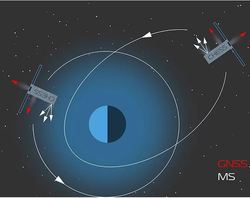 constellation of identical nanosatellites to study the composition of the terrestrial atmosphere and its density," the CHESS website explains. The first satellite will have a nearly circular orbit at an altitude of 400 kilometers. The second will have an elliptical orbit with an altitude of 350 × 1,000 kilometers.
constellation of identical nanosatellites to study the composition of the terrestrial atmosphere and its density," the CHESS website explains. The first satellite will have a nearly circular orbit at an altitude of 400 kilometers. The second will have an elliptical orbit with an altitude of 350 × 1,000 kilometers. efficiency comparable to a 5-foot J-pole. All you need is some hardware-store copper tape and PVC pipe, and the cost is roughly $10. It's an easy afternoon's homebrew project, ideal for the new ham but equal to the experienced ham's needs. It is great for events like bike-a-thons. It also makes an excellent ham radio club hands-on building project, and the design is adaptable to other bands.
efficiency comparable to a 5-foot J-pole. All you need is some hardware-store copper tape and PVC pipe, and the cost is roughly $10. It's an easy afternoon's homebrew project, ideal for the new ham but equal to the experienced ham's needs. It is great for events like bike-a-thons. It also makes an excellent ham radio club hands-on building project, and the design is adaptable to other bands.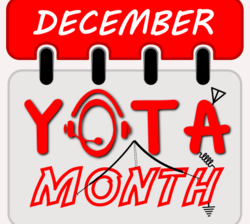 participating operators. This marks an 11.3% increase in contacts from the 2019 total of nearly 12,500. Some operators used the 1 × 1 call signs during various operating events.
participating operators. This marks an 11.3% increase in contacts from the 2019 total of nearly 12,500. Some operators used the 1 × 1 call signs during various operating events..png) The RadFXSat-2 Fox 1-E satellite beacon on 435.750 MHz has not been heard, and AMSAT asks the worldwide amateur satellite community to listen for the BPSK telemetry. Visit
The RadFXSat-2 Fox 1-E satellite beacon on 435.750 MHz has not been heard, and AMSAT asks the worldwide amateur satellite community to listen for the BPSK telemetry. Visit 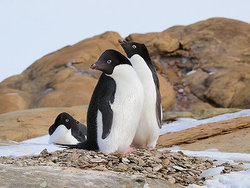 Japanese Antarctica Research Expedition (JARL) station 8J1RL will be active from February 2021 to January 2022 with Takumi, JG3PLH, at the helm. 8J1RL is located at the Japanese Syowa Station on East Ongul Island in eastern Antarctica. Activity will be on SSB, CW, and FT8, 7 - 28 MHz.
Japanese Antarctica Research Expedition (JARL) station 8J1RL will be active from February 2021 to January 2022 with Takumi, JG3PLH, at the helm. 8J1RL is located at the Japanese Syowa Station on East Ongul Island in eastern Antarctica. Activity will be on SSB, CW, and FT8, 7 - 28 MHz. 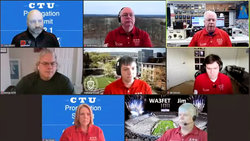 YouTube recordings and PDF files from the
YouTube recordings and PDF files from the 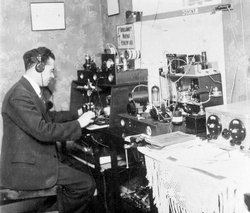 2021 is the centennial of the Finnish Amateur Radio League (
2021 is the centennial of the Finnish Amateur Radio League (.jpg) The
The 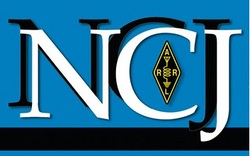 The February 6
The February 6 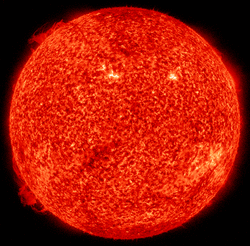 Predicted solar flux for the next 30 days is 76 on January 28 - 29; 74 on January 30 - February 1; 72, 70, and 73 on February 2 - 4; 76 on February 5 - 10; 77 on February 11 - 20; 76 on February 21 - 24, 75 on February 25 - 26.
Predicted solar flux for the next 30 days is 76 on January 28 - 29; 74 on January 30 - February 1; 72, 70, and 73 on February 2 - 4; 76 on February 5 - 10; 77 on February 11 - 20; 76 on February 21 - 24, 75 on February 25 - 26..jpg)








